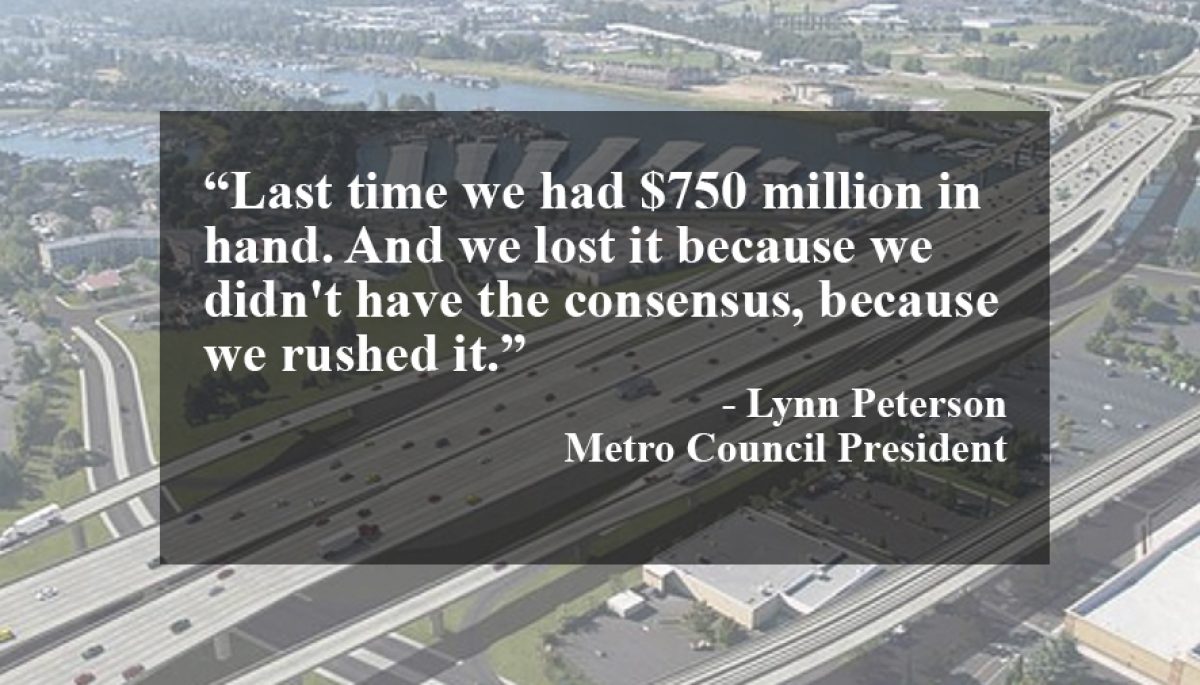
It was all smiles when the second incarnation of the Columbia River Crossing project got off the ground nearly one year ago. But now that key decisions need to be made, the high stakes are causing anxiety among some powerful stakeholders.
At the Executive Steering Group (ESG) meeting of the Interstate Bridge Replacement Program (a misleading name given that the project will impact a five-mile stretch of Interstate 5 between Portland and Vancouver) on Wednesday, members discussed the draft “Purpose and Need” and “Vision and Values” documents.
Advertisement
At issue is the need to finalize these critical, federally-mandated documents that will set in stone the parameters of future design alternatives. These statements will be part of documents required for federal funding and the all-important National Environmental Policy Act (NEPA) process.
Given the importance of these statements, elected officials on the ESG, department of transportation staff from Oregon and Washington, and project consultants are in a delicate dance where timelines loom and potentially controversial decisions need to be made.
NEPA documents are difficult enough. But the IBR Program has the unique challenge of being an extension of the CRC, a project that was eight years in the making and cost Oregon and Washington taxpayers around $200 million to plan before it failed calamitously in 2013.
IBR Program staff want to get in line for an expected gold rush of federal infrastructure funding, and they must decide which parts of past CRC planning work to copy/paste and which parts to delete. They want the final draft of the Purpose and Need to be completed by May for presentation to both state legislatures.
Not surprisingly, the combination of a fast timeline and a concern that the new project sounds too much like the old one is making politicians very nervous.
At the outset of Wednesday’s meeting, project administrator Greg Johnson was forced to address a staff meeting on Tuesday where he said things got a bit heated. “We are not trying to railroad anyone as has been said,” he shared, “We’re trying to run a program that has some very real dates going on into the future. We’re trying to meet those dates and bring in community engagement to make sure that we are moving the program forward in a reasonable way.”
“We know that we have some differing opinions on what the Purpose and Need should address… So we are working on those issues. We do not have a set language that we’re going to pull out of our back pocket and move forward.”
As for that heated staff meeting? Johnson tried to calm the waters. “Tensions ran a little high in the staff level meeting. Understood,” Johnson said. “… Folks are free to voice their concerns… But folks are not free to walk away from the problem. We have to have everyone’s input as we move this forward. So I just want to make sure and re-center us.”
Advertisement
Johnson and other IBR Program staff will use some of the language and planning work from the CRC. “The 2011 I-5 Columbia River Crossing Record of Decision still remains valid, and the IBR program will utilize and update past work to support efficient decision making, while reflecting current community priorities and changes since the previous planning effort concluded,” states the current draft Purpose and Need.
The CRC is toxic politically, so it’s understandable elected officials want as much distance from it as possible.
For context, the CRC’s 14-page Purpose and Need statement from 2011 makes zero mention of climate change or equity.
City Commissioner Jo Ann Hardesty represents Portland on the ESG. In a statement she read at Wednesday’s meeting, she said, “Climate and equity are two of the most urgent needs of our time. And I would still like to see these centered with the Purpose and Need for this project… Relying on the same framework as the CRC is not serving us well today.”
In reply, Johnson sought to reassure Hardesty. “There are some things that have yet to be done, that I think will address a lot of your concerns,” he said. “As you are aware, $200 million dollars was spent on the CRC… We aren’t framing it from that, but it’s something that we have to make sure that we walk through, and that all of those questions that were asked and answered are being answered in this [new] document.”
Metro Council President Lynn Peterson expressed similar concerns to ones she shared back in January: That the process needs to slow down and make a cleaner break from the CRC.
“The amount of of quick turnaround that’s happening is too quick in order to be able to get to our councils,” she said. “We’ll all work as hard as we can towards [a decision in] May. But we currently are not even on the [Metro Council] agenda until the end of May.”
Peterson also echoed Hardesty’s concerns: “We’re getting to the point where it’s starting to sound like the old way of doing business, and I don’t want to slide into that. And that is putting pitting values against values and modes against modes.”
Peterson — who must balance wide-ranging transportation perspectives from five different counties — urged project staff and ESG members to be cautious. Her comments at the end the meeting were a personal appeal for unity and a warning about the perils of moving forward without consensus:
“We need to find a balance between how fast we run, and what potential funding sources are out there. Because last time, we had $750 million in hand. And we lost it because we didn’t have the consensus, because we rushed it. And so this balance that we’re all walking is a tight-rope. And I think we all need to just acknowledge we’re all on a tightrope together and one of us makes a move and there’s going to be… there’s going to be a massive [someone in the meeting flailed their arms as if they were falling]… I just know I’m not good on a tightrope. So let’s resolve to holding hands together.”
The ESG plans to finalize the Purpose and Need and related documents at their May 19th meeting.
— Jonathan Maus: (503) 706-8804, @jonathan_maus on Twitter and jonathan@bikeportland.org
— Get our headlines delivered to your inbox.
— Support this independent community media outlet with a one-time contribution or monthly subscription.

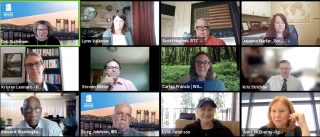
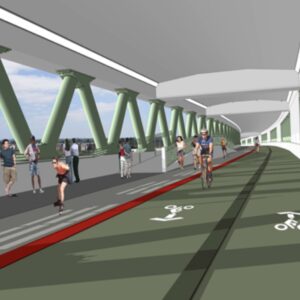
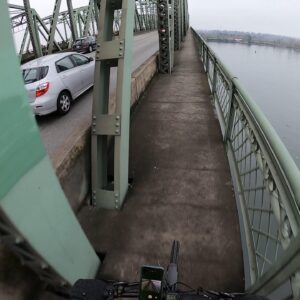
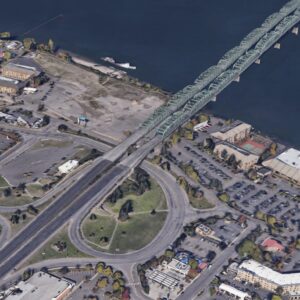
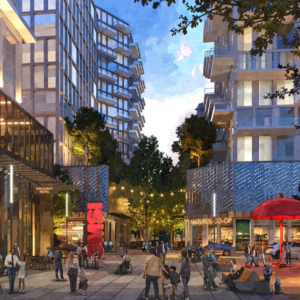
Thanks for reading.
BikePortland has served this community with independent community journalism since 2005. We rely on subscriptions from readers like you to survive. Your financial support is vital in keeping this valuable resource alive and well.
Please subscribe today to strengthen and expand our work.
There was no consensus because it was a bad project.
Maybe this time, start with the common-sense alternative. Use it to test the waters and see how much opposition there is.
AS someone who worked on the bike / ped and transit portions of the CRC from the inside and outside, it is too simplistic to just label it as a “bad project”, sure there were “bad” elements of it sure and in the end the baby got thrown out with the bathwater. [I did not like everything in it but would have been enjoying riding the Yellow Line to Vancouver for the last 5 years, seeing how it revitalized the downtown and seeing tolls manage the regional over-drivng from both sides of the Columbia.]
We need to see that the CRC project was in many ways a forecasting of the polarized politics that now is seen nationally (the rural urban divide / red v blue / free riders vs no riders and a single seat shift in party allegiance in the WA Legis that helped scupper the state funding).
I worry that this next project may have even less regional cohesion especially after what I saw in Vancouver this summer with the Trump trucks, anti maskers and local leadership vacuum …and this does not even touch on the ‘baggage’ that Portland is dealing with. The current ODoT I-5 project may in hindsight be a cakewalk. And I worry that the bistate LRT element will be discarded for a very weak B[R]T service just since it is cheaper and more palatable politically for some in Clark County. It will take very strong State / Federal guidance to keep any multimodal bridge replacement project on track and not increase in costs by 400%.
One thing I recall from the CRC process: it isn’t that much more expensive to rehab the existing bridges than to remove them. It shouldn’t be difficult – politically – to build a new freeway-only bridge with three lanes each way plus shoulders, AND rehab the existing bridges for LRT, bikes, pedestrians and local/arterial traffic.
And echoing Squareman below: they should limit the project to building a new bridge, and not use it as a pretext to ram through a five-mile long twelve-lane freeway expansion.
During the CRC planning, both ODOT and WADOT said that they did not want to maintain/upgrade the existing bridges once a new one is built. There was talk of turning them over to the city/county but it did not sound like Vancouver or Portland could afford to.
Even if rehabbing the existing bridges were less expensive than removing them, there are several significant drawbacks to doing that. First, there are huge costs for operating the bridges (on-going maintenance including the lift span, having personnel on duty to raise the span 24/7/365). Second, placing another bridge near the existing ones complicates river traffic operations significantly due to the additional piers. And, because of the river navigation issues, it’s likely the Coast Guard would not allow the placement of an additional bridge anywhere in the area. Finally, the agreement to minimize calls for bridge lifts during peak motor vehicle traffic periods would likely be rescinded. This would result in lots of bridge lifts, thus disrupting traffic using the existing bridge. Do you really want to allow frequent disruption of the flow of LRT, bikes, pedestrians and local traffic?
JR — inserting a “lift span” in the middle of the BNSF rail bridge (1 mile west) would eliminate 95% of the Interstate Bridge lifts.
Metro has plans to do exactly that, for the 2028-2040 time frame. They have done this on the same rail line where it crosses the Willamette River. I think the cost was about $35 million, partly paid for by BNSF.
Bridge lift problems solved.
back in 2008(?) the DOTs tried to get BNSF to agree to a proposal to update their 1908 bridge (Bridge 9.6) but they did not want to. I seem to remember that the US Coast Guard got involved too…as a river hazard.
(The railroads operate under some very industry friendly rules dating back to the 1870s…so they hold many more cards and control than any other private bridge owner would in a similar case.)
https://en.wikipedia.org/wiki/Burlington_Northern_Railroad_Bridge_9.6
I don’t think that you can build a new six lane “freeway-only” bridge and not tear down the 1949 southbound span. Waterfront Vancouver has encroached on the space that new freeway-only bridge would need to pass west of the existing spans. It would be the height of folly to disassemble the thirty-year younger span and keep the ancient one with individual rivets everywhere. A single-span would necessarily be two lanes for the LRT and one lane bikes/pedestrians. It would carry no local arterial traffic.
Such a design would kill downtown Vancouver access to the south by any means other than the LRT, cycling or walking. Even the relatively progressive Vancouver City Council won’t stand for that.
Actually there was consensus – at many stages. There was consensus about the need to include light rail; consensus about replacing, rather than reconstructing the existing bridges; consensus about the height of the new bridge; consensus about the need to mitigate for every impact; consensus about lots of things.
But the project is so complex and the need to analyze everything made the project take so long that the participants who reached consensus (mayors of Portland and Vancouver, for example) were replaced by people without the background on the project and who didn’t learn about the previous work and didn’t vigorously defend the well-reasoned, carefully thought out compromises and decisions.
Much of what has been described as the common-sense alternative was, in fact, actually considered in the very early stages of the CRC project and was shown to have considerable flaws.
The “consensus” you cite did NOT include residents of Clark County when it comes to light rail.
The “consensus” you cite about bridge height did NOT include the users of the river nor the Coast Guard. Yes, the Coast Guard ultimately gave approval for the “modified” bridge height, but only AFTER two Coast Guard Commanders were relieved of duty because they didn’t give the politically correct answer the politicians wanted.
No, let’s go slow so people can then say “well, we’ve delayed this puppy a few years so now the price tag can get even higher.” At some point a decision has to be made and stall tactics waste resources. If the city and Metro want to drag their feet then it should feel like the old days. Who’s fault is it that metro seems to be behind in chatting about it? If it were important to them then I’m sure Lynn would find a way to move it up on her priority list. At some point we will need a new bridge, just like Sellwood and soon to be Burnside. “Let’s get moving folks.”
I assume it’s a misquote, but $750 million is quite a bit more than a quarter billion dollars.
I think she meant that Oregon’s share of the old CRC project would’ve netted $750 million from the feds. Planning was about $250 million for the original project that the state of Washington killed.
The blockquote in the actual story has the right math, so probably a misquote.
it sounds like the problem has always been that they don’t want to come out and say they want to widen the freeway, but they definitely want to widen the freeway.
Common sense. Build high speed passenger rail. Plus, Realign the swivel portion of the nearby railroad bridge so that it swings at the same place on the river where the highest point is located on the I-5 bridges. A permanent solution for not much money compared to CRC.
That makes sense to me, the rail span is even older and shakier than I-5, but I also see a couple big hurdles. It’s owned by the railroad and they will drive a hard bargain. That’s a lot of public funds going into a private enterprise. And then, to rebuild that whole span will take a long time and there is no easy detour. West coast rail traffic will be bottlenecked for a year or more.
Building a parallel rail bridge first would take care of the second problem, but still leaves the funding question. Public interest in it might be applied toward passenger high speed rail.
Actually, the lift towers can be built “around” the existing structure; they have to be far enough apart on the same side of the lift to pass two rail tracks, so just build them adjacent to the existing structure. Once the towers are in place the new lifting span can be floated to directly upstream from the bridge and a barge placed underneath the section to be removed. Then the barge lifts the section to be removed and is pushed downstream. Finally the replacement section is floated into place and the lift cables connected.
This can probably be done within three weeks.
Yes, that’s a long time to have the UP lines to California and the east disconnected from Puget Sound, but the Cal line was out for several months a year after the landslide. SP just used the BNSF line up the Deschutes River and rerouted lots of traffic on the UP via Ogden. IIRC, they even used the old line through Medford for some freight. The Deschutes line was jammed but it’s been somewhat upgraded since then.
So far as UP freight to Ogden from Seattle, as much as possible could use the North Side line to Pasco and loop back to Hinkle. Other traffic would use Stampede to get to Pasco.
I never cease to be unamazed and underwhelmed by politicians’ ability to not remember pertinent details of why projects fail. The CRC didn’t fail because Oregon rushed on it, it failed because the Washington state legislature decided to not fund their part in it – why support a project that is designed to make traffic congestion in the Seattle metro even worse?
If Oregon wants to entice Washington state legislators, and their much larger congressional delegation, to support this round of CRC, Oregon is going to need to mitigate the traffic congestion they are sending north by giving Seattle metro something they badly want, such as high-speed rail through Portland.
If Oregon was willing to use the $1.5 Billion funding for the RQ & CRC projects to run a double-track of TGV-type tracks along I-5, surrendering lane width when necessary, and developing underground stations at say Salem, Washington Square, Rose Quarter, Vancouver WA, etc, my guess is that Washington state would be more willing to help out on developing a rail corridor independent of the BNSF alignment and pay for their portion of the bridge. But this would likely require Oregon to abandon freeway widening projects all along I-5 in favor of rail.
And give the project a new name. Cascadia Multi-Model Corridor?
Plus close all the interstate interchanges in the inner city, they are clear safety hazards for non-motorized city residents.
Washington Square?
Are you claiming that motorists from Oregon are creating traffic congestion in the Seattle metro area? And that congestion could be reduced by high speed rail with new stations in Salem, two in Portland, and another in Vancouver, WA?
From the census information, we know about 55,000 Washingtonians (mostly from Clark County) work in Oregon. Just how many from Oregon work in Seattle?
I don’t see the Washington legislature being persuaded to spend any money connecting Oregon to Seattle by high speed rail as solution to Seattle congestion.
I-5 is a regional conduit for drivers from San Diego to Bellingham (and VanBC); Portland happens to be a bit of a bottleneck somewhere in between, barely relevant commercially. Thanks to induced demand, by widening the freeway at this bottleneck, drivers from LA, SD, & SF will be more inclined to drive rather than fly to Seattle and vise versa. Portland’s local traffic is neither here nor there – it’s largely a suburb of both Seattle and the Bay Area judging by its major commercial employers.
No state can by itself get federal funding for HSR, not even California and Texas, but it might be able to as part of a package or pact in the US Senate. Amazon wants HSR on the West Coast as does Tesla, Alphabet and Apple, but they also want federal funding and the feds legal powers to deal with reluctant land owners along the way, not to mention dealing with the ancient all-powerful RR companies. What Washington state and California wants is largely dictated by high-tech corporate interests. And bucolic Oregon is in the way.
David, you’ve got to be kidding. Driving from SD, SF, and LA to Seattle will become more attractive if a bottleneck in Portland is eliminated?
There are about 7,000 vehicles that use I-5 in each direction at the OR-CA border. Driving from CA to Seattle pretty much requires a motorist to use this segment. Well, I suppose one could use US 97 or 101, but what percentage of this 7,000 is going from CA to Seattle? Ten percent?
In contrast there are more than 60 direct flights in each direction between Seattle and a combination of SFO, SJC, SAC and LAX. That represents more than 10,000 available airline seats in each direction. That doesn’t even account for connecting flights.
Shaving 30 minutes of travel time by improving traffic flow on I-5 within Portland will have no effect on the drive/fly ratio between CA and Seattle.
No they won’t. It’s absurd to assert that someone will make a 15 hour drive from LA to Seattle but wouldn’t if it takes 17 hours (Google’s current estimate).
Actually the WA legislature did not oppose it because it would have made Seattle traffic worse. The Seattle area legislators are mostly Democrats and mostly supported it. The WA GOP led by Clark County racist NIMBYs are the ones who torpedoed the last bridge. It was almost entirely suburban Clark county opposition to light rail and opposition to future tolls that blocked the bridge project. I live up here in Clark County and there was endless racist rhetoric about the “crime train” from Portland and so forth. Also a lot of nonsense about how Metro was trying to foist off it’s budget deficit on Clark County taxpayers by pushing Max over the river and tying Clark County into metro.
Traffic in Seattle never came up to my memory.
As I recall, the WA legislature directed all their funds to fix the 1-90 and 520 floating bridges, and to shore up the mounting deficits on the Alaska viaduct tunneling/dismantling project. The republicans from Clark County nor Spokane matter that much in the great scheme of things, though I have no doubt you are correct on the (political) noise from Clark County – I just don’t the state legislature was ever planning to listen to Clark Co legislators in the first place as they had no skin in the game.
Too much history, but, the Republicans had a narrow majority in the Senate that year. None of Clark County’s republic legislators supported the CRC project and were able to keep it from advancing in the senate. I’m not sure that it was even brought up for a vote. The House did pass a bill that included funding for the CRC project.
I believe the next year a larger gas tax ended up passing. The CRC had already been canceled and a majority of the large projects that had dedicated funding were in Seattle and Spokane.
No MAX access. That was the dealbreaker last time. Is the Oregon side ready to give that up?
Of course not, why should an project like this not incorporate public transit and other public access beyond motorists?
Could you expand on this? What benefit would this project be to the metro area without LRT?
Nope, Menaji. Bridge has gotta have LRT – or even HSR (high-speed rail). Should be a deal-breaker for Oregon. Remember: Clark County commuters need the bridge more than Portlanders.
No. Any additional lanes and capacity should be dedicated 24/7 transit lanes. Period, end of story. Whether that’s BRT or LRT, doesn’t matter. If this bridge is just being built for the purpose of opening the floodgates of SOV traffic from Clark County into the Portland Metro Region, Oregon doesn’t want it.
There are better things to spend this money on; the Mt. Hood freeway money was ultimately spent on the nascent MAX line.
Mr. Johnson is out of his league here in Portland. He’s not neutral. Does he get a bonus for completing the project on time? How are community values monitored in payee bonus packages? Do new employees have a requirement to lower GHG emissions moving forward?
“In reply, Johnson sought to reassure Hardesty. “There are some things that have yet to be done, that I think will address a lot of your concerns,” he said. “As you are aware, $200 million dollars was spent on the CRC… We aren’t framing it from that, but it’s something that we have to make sure that we walk through, and that all of those questions that were asked and answered are being answered in this [new] document.”
WE DON’T HAVE TO WALK THROUGH ANYONE’S BAD PLANNING PAST. We did not participate in the planning of the $200 million nor are we responsible for any promises made in that failed process.
We should just put Hardesty in charge of the whole project. She knows the neighborhoods. She’s actually been elected and within her right to have the project reframed around climate justice. #keepgoing
The one thing Lynn Peterson got wrong was stating “we had $750 million”. Actually, the figure was $850 million, and it was ONLY tied to the light rail component of the project. FYI.
Consensus is a fools errand. There will never be consensus.
They just need to have a bunch of experts figure out how most beautifully and efficiently (time + cost + co2) move more people through the corridor.
You can’t make everyone happy…and people have learned that when you cry the loudest others will give you something.
so then the question becomes: who are the experts we should trust?
And who will hire and pay them? With who’s money? If you are just using your own cash from Oregon taxpayers, go ahead and hire your own people; but as soon as you start to use my out-of-state federal taxes, I want my people in charge, even if they are incompetent.
Elections have consequences. The last project was torpedoed because the Clark County suburban/rural GOP (mostly from outside Vancouver proper) was part of the GOP Senate majority in the WA State Senate and they threw a temper tantrum over light rail.
Now we have Democratic majorities in both the WA and OR legislatures, Earl Blumenauer who’s district the project runs through is now in the majority in the House, both states have Democratic governors, and Democratic Senate delegations. Jaime Herrera Beutler in Vancouver is the only GOP politician left who’s district touches this project and she is an ineffectual back bencher.
Now is the time to develop a truly progressive multi-modal bridge project that includes transit, bicycles, and pedestrians as well as cars. That also means wrapping light rail into the project, not just making the bridge “light-rail ready” or worse yet, substituting in some ridiculous BRT compromise that only runs as far as Delta Park and forces Portland-bound commuters to transfer between modes of transit just to get from Vancouver to Portland.
Um… sorry to state the obvious, but… It’s your own re-elected Democratic-Party Oregon state legislature that is forcing the Rose Quarter expansion project down your collective Portland throats, not your Republicans, not to mention the both the original and the new CRC, increases in freeway speeds, concealed handguns, etc. It seems to me you are mixing up the concepts of “liberal progressive” and “Oregon Democrats”.
Not that NC Democrats are any better, they too love their freeway bypasses and have proven to be happy to cancel state bike, transit, and pedestrian funding in favor of building more freeways. In fact the current POTUS would be in the 1980s the epitome of the perfect moderate Republican, which is why I sincerely wish the current Secretary of Transportation “good luck” in getting the congress and his boss to actually deliver on climate-saving strategies and transportation projects. All I can see is even more highway lane mileage and as usual a pittance for alternative modes (a 100% increase on a pittance is still a pittance).
A problem with your political analysis is that a C-Tran sales tax levy was required to pay the O&M costs for MAX in Vancouver. There was some talk of restricting the cost strictly to the downtown area that LRT was going to serve, but that wouldn’t have raised enough and was dropped. It wasn’t going to pass a County wide vote because the suburban/rural GOP was and still is the majority.
Another problem was diversion to the Glenn Jackson, which polling indicated anywhere from 65% to 80% of respondents (two polls) said they would do to avoid paying the I5 toll. Try to toll the I205 bridge and much of the Clark County support will disappear. And though there is a Democratic majority in the state legislature, there are enough Republicans in important positions who would make supporting this toll an unwise move.
I’m sure Jaime would be laughing at the back bencher comment. She does serve on a couple of subcommittees that determine funding for these projects. Earl on the other hand is on no committee that can influence this project and would be dependent on obtaining DeFazio’s support.
The comment on transferring from BRT to MAX is also laughable. Commuters transfer every day now, at Delta Park and Parkrose Sumner. And seeing as how MAX would only extend into downtown Vancouver and possibly to Clark College, those who would want to take MAX would still need to go to a park and ride lot and catch a bus downtown where parking is minimal.
Regarding “consensus” about LRT from Clark County residents…it is the one ‘sad thing’ that LRT will really only be a “local” service within Vancouver city limits…so for north and east county folk to get too involved and scupper a project is one weakness of how the CTRAN Board of Directors is formed…by mayors of many county small cities and the council commissioners (now councillors) thus the City representation is a minority of the seats.
When I used to work on transit access in Vancouver…this always comes to light when I asked CTRAN board members if they use CTRAN (or any transit) in their daily lives…its pretty limited even for Vancouver council members. And I have long said…its like the board of directors of the water bureau (or power utility) not using (or actually avoiding being a customer of) their own product and the outcomes of their decisions.
Much of this is how Washington State law requires transit boards to be formed…vs. say how Trimet is through selection by the Oregon governor for each district. This makes it easier to find stakeholder who are actually customers…if the governor so chooses.
Great insight. This is why preferred routes through the region for each mode should be a part of this project planning. Everyone assumes all modes should be on one megabridge. Freight, for example, would not really benefit from a megabridge in the long run, due to induced demand. It would benefit from a dedicated route via N Portland including a new bridge North of St. John’s, and perhaps even a freight/HSR bridge on W Hayden. This project must make dedicated routes through Portland for ALL modes. And separated bike route for the bridge that ends at either end, is not a multimodal project.
The formula last time was pretty simple…if you want more lanes (WA) the project must have two things: light rail and tolls (OR). Nothing has changed, except the idea of more lanes is now worse than ever. Just paint HOV lanes for transit and carpools and charge $5 for SOVs coming into OR. Problem solved.